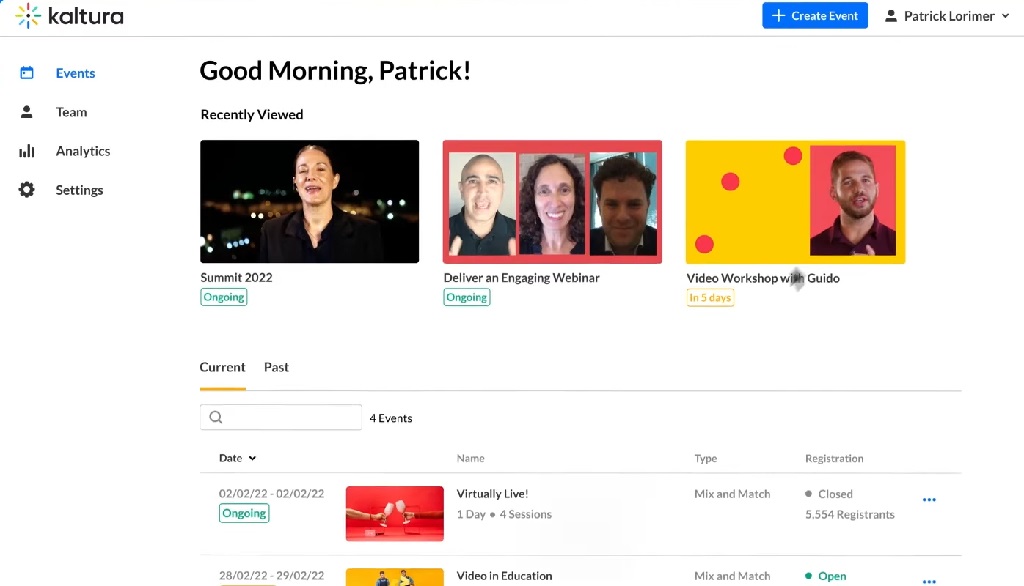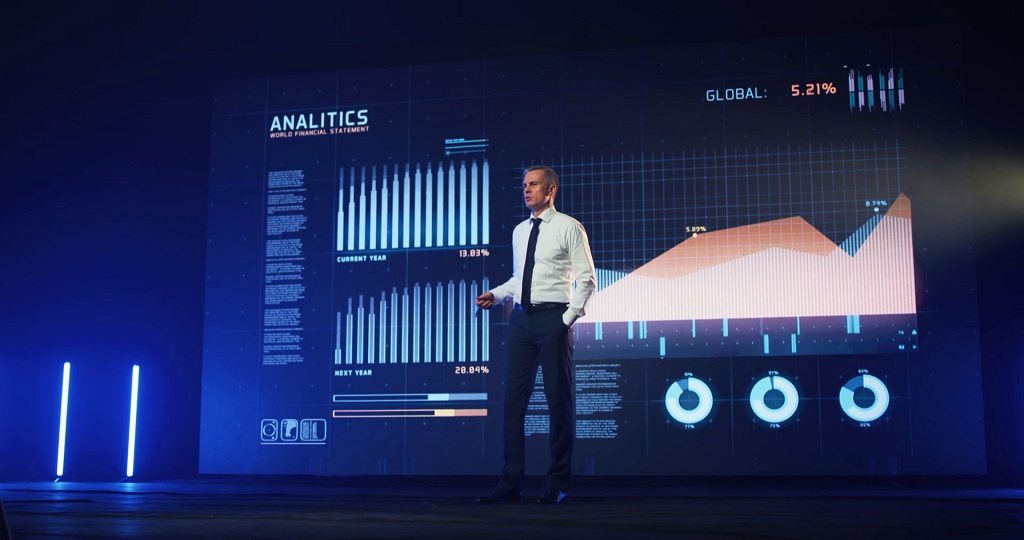Conferences have evolved rapidly in recent years, with hybrid and virtual formats becoming standard for global collaboration.
As companies adapt, choosing the right set of tools determines how efficiently an event is organized, executed, and remembered.
All solutions play a crucial role in streamlining workflows, enhancing audience participation, and ensuring smooth technical performance.
Let’s check them out.
1. All-in-One Event Management Platform

Managing a conference involves numerous moving parts:
- Registration
- Scheduling
- Communications
- Data tracking
All-in-one event management platforms like Oniva and Eventin consolidate these functions under one digital hub.
Organizers benefit from centralized control that reduces errors, saves time, and creates a professional participant experience.
Key Features:
- Custom registration forms with participant quotas and waiting lists.
- Branded event websites displaying countdown timers, agendas, speakers, and speaker stands.
- Integration with CRM systems and marketing tools for smooth lead tracking.
- Support for multiple languages with full GDPR compliance.
Such platforms form the operational backbone for conferences, allowing planners to focus more on engagement and content rather than logistics.
2. Virtual Conferencing & Live-Streaming Platforms

Hybrid and virtual gatherings rely on platforms that deliver stable, high-quality streaming experiences.
Tools such as Kaltura Virtual Events, Zoom, and StreamYard enable companies to host webinars, panel discussions, and live keynotes with professional-grade control.
Reliable streaming ensures every attendee feels connected, no matter their location.
Key Features:
- HD video and audio with screen-sharing capabilities.
- Interactive breakout rooms, Q&A sessions, polls, and live chat.
- Post-event recording archives and viewership analytics.
- Multi-platform broadcasting to channels like YouTube Live and LinkedIn Live.
Choosing a robust virtual conferencing tool ensures sessions remain interactive, accessible, and engaging for global audiences.
3. Audience Engagement & Interaction Tools
Engagement determines how memorable an event becomes.
Tools such as Mentimeter, ChatGPT, and Interprefy enhance audience participation while breaking communication barriers.
They enable real-time interaction and inclusivity, especially in international settings.
Key Features:
- Live polls, interactive quizzes, and post-session surveys to keep participants involved.
- AI-powered translations and simultaneous interpretation for multilingual audiences.
- Chatbots and AI content generation for tailored responses and automated support.
When attendees feel involved and heard, overall satisfaction and information retention increase significantly.
4. Event Design & Branding Tools

First impressions matter in conferences just as much as they do in marketing.
Tools like Canva and Venngage help organizers design compelling visuals, create promotional materials, and maintain consistent branding across all media.
Strong visuals not only capture attention but also reinforce credibility and professionalism.
Key Features:
- Templates for invitations, social media banners, and presentations.
- Brand kits for maintaining consistent colors, fonts, and visual identity.
- Built-in video editing tools for teasers, highlight reels, and post-event recaps.
Creative design tools elevate event identity, transforming logistical meetings into branded experiences.
5. Team Collaboration & Communication Tools
Successful conferences depend on seamless coordination between teams.
Platforms like Microsoft Teams, Slack, and Beekast keep internal communication structured and responsive.
With real-time collaboration features, everyone stays aligned before, during, and after the event.
Key Features:
- Shared channels for quick updates and cross-department coordination.
- Integrated task boards and file-sharing capabilities.
- Meeting automation features and analytics that measure team performance.
Strong collaboration tools eliminate confusion, allowing staff to focus on execution rather than troubleshooting.
6. Event Promotion & Marketing Automation
Promotion is the engine that drives awareness and attendance for any conference. Without a strong marketing plan, even the most impressive event can go unnoticed.
Digital tools like Encharge, Mailchimp, and HubSpot provide a complete ecosystem for managing campaigns, automating outreach, and monitoring engagement metrics.
Smart automation streamlines processes that once required entire teams.
Encharge focuses heavily on workflow automation and behavioral triggers, while Mailchimp’s simple interface allows smaller teams to create professional-grade email sequences.
HubSpot integrates CRM capabilities to ensure that no potential lead slips through the cracks.
Key Features:
- Automated email sequences and behavioral triggers to guide attendees through registration.
- CRM and pipeline tracking to monitor prospects before and after the event.
- Lead scoring and segmentation for personalized communication strategies.
Efficient marketing automation helps maximize attendance and maintain contact with participants long after the event concludes.
7. Feedback Collection & Analytics

Gathering structured feedback after a conference provides organizers with valuable insights into attendee satisfaction, content quality, and operational performance.
Platforms such as SurveyMonkey, Zonka Feedback, and Databox make this process efficient by combining form creation, data collection, and analytics visualization in one place.
Instead of relying solely on anecdotal reviews, event managers can quantify success using measurable data.
For example, SurveyMonkey allows for quick distribution of post-event surveys through email or social media.
Zonka Feedback provides detailed sentiment analysis to identify what worked well and what needs improvement.
Databox consolidates feedback and event data into visually intuitive dashboards, giving stakeholders instant clarity on event impact.
Key Features:
- Custom feedback forms adaptable for different event types.
- Dashboards with real-time visual analytics and reports.
- Integration with event management and CRM systems for unified data.
Data-driven insights transform feedback into actionable strategies, ensuring continuous event optimization.
8. On-Site & Remote Staffing Tools
Every successful conference depends on reliable, well-coordinated staff.
Managing teams, both on-site and remote, can be a logistical challenge without the right digital support.
Solutions such as Coople and Deel simplify this process by handling recruitment, payroll, scheduling, and compliance in one secure system.
Coople connects businesses with skilled temporary workers available on demand, ensuring that roles like registration assistants, ushers, and technical support are filled quickly and efficiently.
Deel focuses on the remote aspect, allowing international hiring with built-in contract management and automated payments.
Organizers can easily coordinate between on-site and virtual teams without worrying about administrative delays or legal complications.
Key Features:
- On-demand staffing for short-term or remote positions.
- Automated payroll and contract management.
- Roles such as registration assistants, moderators, and IT support easily filled through vetted networks.
Access to skilled and flexible staffing solutions enhances professionalism and reliability during every stage of a conference.
The Bottom Line
Efficient conferences require a structured toolkit built around integration, automation, and engagement.
Starting with a robust all-in-one event management platform provides a strong foundation, with additional systems added strategically to complete a reliable conference technology stack.
Related Posts:
- 7 Things Every Global Business Must Prepare Before Expansion
- The Top 10 Tools That Help Amazon FBA and FBM…
- 7 OSHA Standards Every Industrial Company Should Know
- Top 10 Wedding Dress Trends Every Bride Will Love In 2025
- Katt Williams Net Worth in 2024 - Top 7 Investments…
- From Startups to Giants - How Technology Is Driving…
















